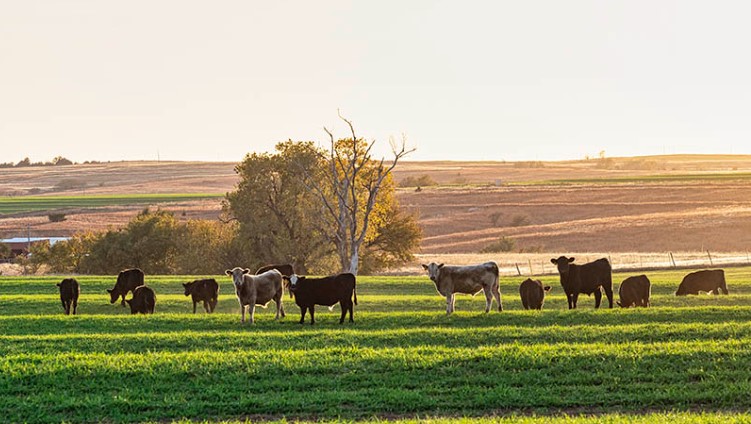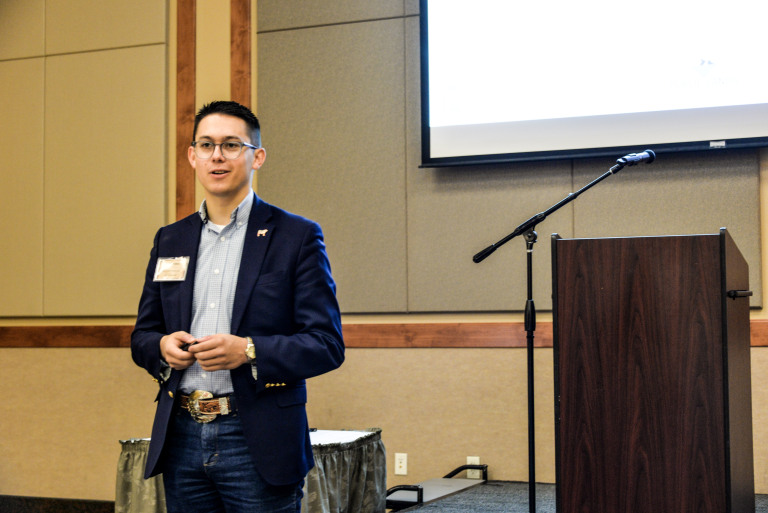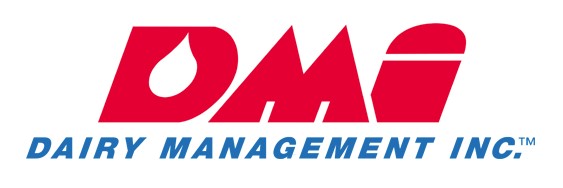Wed, 28 Sep 2022 14:52:43 CDT
By producing fuel using sources with lower carbon intensity than traditional petroleum-based products, the U.S. biofuels sector is well-positioned to play a major role in reducing greenhouse gas emissions. A…

Sep 28
Wed, 28 Sep 2022 14:52:43 CDT
By producing fuel using sources with lower carbon intensity than traditional petroleum-based products, the U.S. biofuels sector is well-positioned to play a major role in reducing greenhouse gas emissions. A…
Sep 28
Wed, 28 Sep 2022 14:06:27 CDT

Listen to today’s report with Justin Lewis, by clicking or tapping on the LISTEN bar
Sep 28
Wed, 28 Sep 2022 12:10:13 CDT
Jim Mulhern, president and CEO of the National Milk Producers Federation (NMPF), issued the following statement regarding today’s White House Conference on Hunger Nutrition and Health:
“I w…
Sep 28
Wed, 28 Sep 2022 12:07:05 CDT

By Alisa Boswell-Gore
Oklahoma State University researchers are requesting input from farmers and ranchers to gauge their interest in crop and livestock insurance.
Jenna Bryant, a graduate student in agricultural economics, hopes the findings will support efficient operations for agricultural lending insurance companies.
The survey has 12 questions. Participants must be at least 18 years old and live and farm in Oklahoma. Eric DeVuyst, agricultural economics professor and OSU Extension specialist for farm and ranch management, is assisting Bryant with the survey project.
“I reached out to people I know in the state and asked what research would benefit them and provide general information to other ag lending organizations,” DeVuyst said.
Bryant will use the survey results to determine the expected impact on customer retention, additional loan volume and any new loan volume. Findings will inform operations at Oklahoma Ag Credit locations and be made available to support efficient operations for all ag lending insurance companies.
“I have a strong interest in ag finance and believe this is a good gateway into that field,” Bryant said. “This feels like a project that I will be able to see an immediate impact from. It is geared toward not only helping this company in making decisions, but it can also help producers by expanding access to crop and livestock insurance.”
The survey, which closes Nov. 15, is open to all qualifying producers in Oklahoma.
OSU Ag Research is Oklahoma’s premier research and technology development agency in agriculture, natural resources and the life sciences.
Sep 28
Wed, 28 Sep 2022 09:25:20 CDT

Senior Farm and Ranch Broadcaster, Ron Hays, got the chance to visit with Tanner Beymer, Senior Director of Government Affairs at the National Cattlemen’s Beef Association, talking about the USDA’s new proposed competition and market integrity rules under the Packers and Stockyards Act.
“USDA announced quite a bit,” Beymer said. “The first was that they are going to be publishing very soon at the federal register the second three rulemakings on Packers and Stockyards enforcement. This is the latest iteration of what has become a 14-year debacle and what the industry has collectively referred to as the GIPSA rules.”
This administration has been looking at revamping some of those rules, Beymer said and building off of the work and replacing some of the work from previous administrations.
“We are looking at, in front of us, an undue and unreasonable preferences and advantages rule out of USDA,” Beymer said. “In addition to that, USDA also announced that they are going to be putting together a pot of money to the tune of 15 million dollars to enter into cooperative agreements with state attorney’s general to incentivize them to better enforce anti-trust statutes in the agriculture sector.”
This is very substantial work coming out of USDA, Beymer said, and relatively unprecedented as far as we have heard in respect to some of the parts that they have announced to date.
“Over the last 14 years, we have seen many different proposed rules that if allowed to finalize would have been absolutely detrimental to the way that we do business in this country,” Beymer said. “This rulemaking that USDA announced, is not officially a notice of proposed rulemaking- it is what they are calling a draft rule. It is 180 pages long and I am not exaggerating when I say that we broke our printer in our office and ran out of highlighters trying to analyze the first little bit of this.”
Beymer said NCBA will be examining this draft rule through the lens of the NCBA grassroots policy process to make sure they are advocating for economic independence and freedoms on behalf of members.
“Anyone watching this from the country has got to be experiencing some degree of whiplash because they have really ping-ponged back and forth on what they believe from administration to administration is the proper role for the federal government in the marketplace,” Beymer said. “They are seeking to assert a lot of authority from USDA into the day-to-day marketplace as part of this rulemaking just from what we have seen so far. I think there is probably some stuff in here that producers can feel pretty comfortable with, but there are a lot of things in here that raise more questions than they answer.”
Over the course of the next several weeks and months as this eventually becomes an official notice of proposed rulemaking and opens up a public comment period, Beymer said that NCBA is going to try to figure out what some of those unanswered and concerning questions are.
“The Packers and Stockyards Act of 1921 was a children’s book compared to this novel,” Beyer said. “We are definitely going to be looking at the congressional intent and whether this exceeds it.”
Click the LISTEN BAR below to listen to Ron Hays and Tanner Beymer talking about USDA’s new proposed regulations under the Packers and Stockyards Act.
The Beef Buzz is a regular feature heard on radio stations around the region on the Radio Oklahoma Network and is a regular audio feature found on this website as well. Click on the LISTEN BAR below for today’s show and check out our archives for older Beef Buzz shows covering the gamut of the beef cattle industry today.
Listen to Tanner Beymer Talk Proposed Regulations from USDA Under Packers and Stockyards
Sep 28
Wed, 28 Sep 2022 09:16:50 CDT
The National Corn Growers Association (NCGA) is encouraging growers to join its call-to-action and submit comments to the EPA on the important role atrazine, a popular herbicide, plays in their work.
Th…
Sep 28
Wed, 28 Sep 2022 09:12:51 CDT
Today the Senate Agriculture Committee reported favorably on the nomination of Alexis Taylor to serve as USDA under secretary for trade and foreign agricultural affairs.
U.S. Meat Export Federation (USME…
Sep 28
Wed, 28 Sep 2022 09:10:53 CDT
Families can expect to pay record high prices at the grocery store for turkey this upcoming holiday season thanks to the impacts of the bird flu and inflation. American Farm Bureau Federation economists anal…
Sep 28
Wed, 28 Sep 2022 09:07:54 CDT

The checkoff-funded Dairy Foods Research Centers network – created to provide innovative, science-backed solutions related to consumer demand and business needs and trends – is celebrating its 35-year anniversary.
Dairy Management Inc. (DMI) provides the structure and oversight for more than 20 universities that comprise the network’s six regionally based centers. This system has supported more than 400 dairy industry companies with research-based solutions related to processing, food quality and safety, ingredients and other areas.
Emil Nashed, executive vice president of research and product development for DMI, said U.S. dairy farmers deserve credit for their longtime commitment to funding research through their checkoff.
“Dairy farmers had the foresight 35 years ago to help secure a bright future for the industry by establishing this research network to provide sustainable innovations and solutions based in sound science,” Nashed said. “We have a first-class network filled with passionate people who are working together on industry challenges and launching the dairy industry into new horizons.”
The network’s six centers include:
• California Dairy Innovation Center
• Midwest Dairy Foods Research Center
• Northeast Dairy Foods Research Center
• Southeast Dairy Foods Research Center
• Western Center for Dairy Research
• Wisconsin Center for Dairy Research
While each center functions individually and with its own area of dairy-focused expertise, they come together through regular DMI-led meetings and various other touchpoints during the year. A sense of camaraderie has formed, said Veronique Lagrange, who serves as director of the California Dairy Innovation Center.
“What I find to be wonderful about the research center network is we have multiple locations across the country with such a broad range of expertise,” Lagrange said. “There’s not a week that goes by when we don’t reach out and say, ‘I’m dealing with an issue,’ or ‘I have this idea’ and we know we can call on someone within the network. We collaborate very, very closely in multiple ways. We don’t duplicate work, but we build off each other’s expertise.”
Innovation and support with artisanal and specialty cheese companies has been a key network success. Specialty cheese production in the 1980s accounted for about 3 percent or less of national cheese production. Today, the U.S. is producing 1.8 billion pounds of artisan/specialty cheese each year and it accounts for more than 13 percent of U.S. cheese production.
The innovation has led to international acclaim. In 2016, Roth® Grand Cru® Surchoix, made by Emmi Roth USA was named overall champion of the 2016 World Championship Cheese Contest. Three years later, a blue cheese from Oregon’s Rogue Creamery became the first American-made product to earn the highest honor at the World Cheese Awards.
John Lucey, who has served as director of the Wisconsin Center for Dairy Research for the last 11 of his 22 years with the university, has led cheese innovation that has sparked this explosion. Lucey said his team has become a go-to resource for cheesemakers of all sizes, from small operations all the way to some of the industry’s largest companies, including Saputo, Foremost, Hilmar, Grande, Bel Brands, Lactalis, Glanbia, Sargento, Great Lakes Cheese and others.
“At our lab, we focus a lot on cheese’s functionality, which is the ability to incorporate it into a variety of purposes by changing the ways it melts, stretches, the rate at which it might burn and even its color,” Lucey said. “The mastery of this research has been transmitted to manufacturers and it has resulted in cheese successfully being used well beyond pizza and into pasta products, baked goods, frozen food, hors d’oeuvres and many other delicious applications.”
Bill Graves, senior vice president of product research for DMI, said another network success has been leveraging its expertise to assist the checkoff-founded U.S. Dairy Export Council and companies that sell their products overseas. Network-led research has focused on technical aspects, such as improved functionality of powdered milk products and conducting research on extended shelf life, so U.S. products maintain their appeal and quality once they reach their international destination.
“To successfully secure international access, you first must understand the many nuances that exist to get dairy into this marketplace,” Graves said. “There are many considerations to adapt dairy foods to meet different palates, uses and customs that exist in other countries. Our research center is adept at addressing these challenges and turning them into opportunities. We want the U.S. to be the preferred supplier to these markets.”
Graves said another tangible and critical benefit is fostering the workforce of tomorrow. Graves said graduates of these programs are highly pursued, including by companies that produce non-dairy alternatives.
“This is also about training the next generation of dairy leaders who are passionate about our industry,” Graves said. “Having checkoff funding support the network is a great way to show students they can enjoy a rewarding career in dairy.”
While the network has enjoyed many highlights over the years, another key success came with its work to take whey – once a discarded byproduct that was fed to pigs or spread on fields – and convert it into the global $10 billion industry that whey protein has become. Pennsylvania dairy farmer Marilyn Hershey, who serves as chair of DMI, said the significance of this breakthrough isn’t lost on farmers and the network’s anniversary is one worth celebrating.
“These researchers are providing a lot of value back to farmers,” Hershey said. “They are working every day to keep dairy relevant in an ever-growing competitive environment, which is helping to secure a stronger future for our industry.”
To learn more about the dairy checkoff, visit www.usdairy.com.
Sep 28
Wed, 28 Sep 2022 08:35:24 CDT
Fire Situation Report for September 28, 2022
NE Area – 8 Fires Burned 77.5 Acres (Cause: 1-Escaped Debris, 3-Equipment, 4-Incendiary)
EC Area – 5 Fires Burned 1,141 Acres (Cause: 5-Incendia…